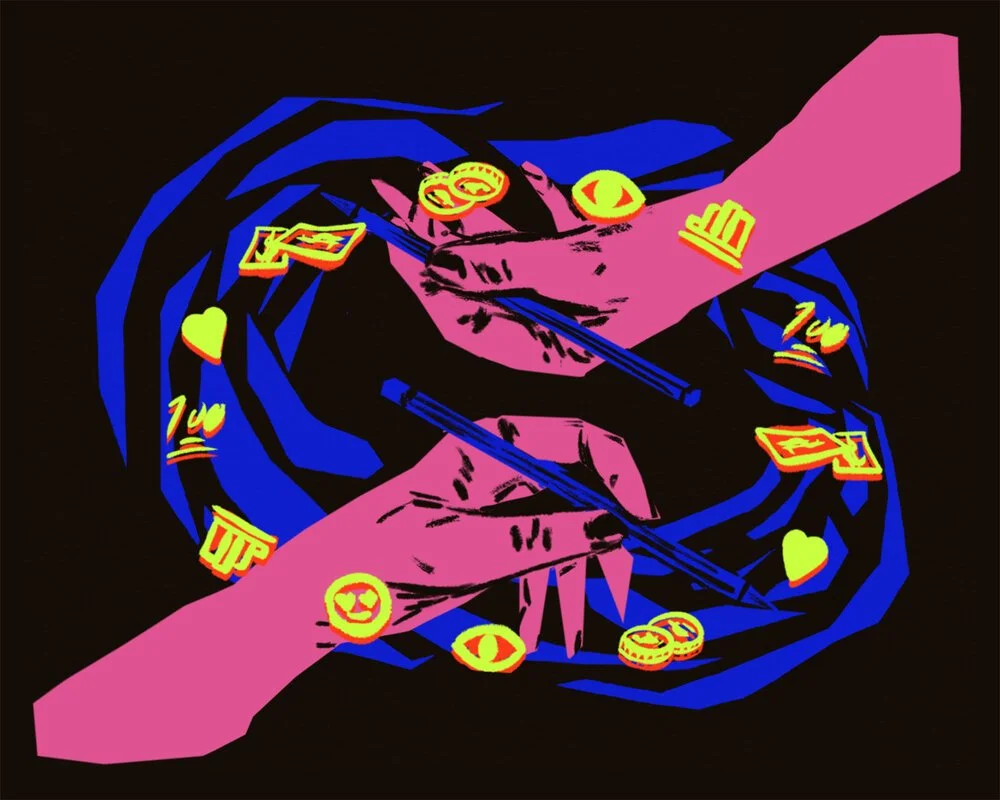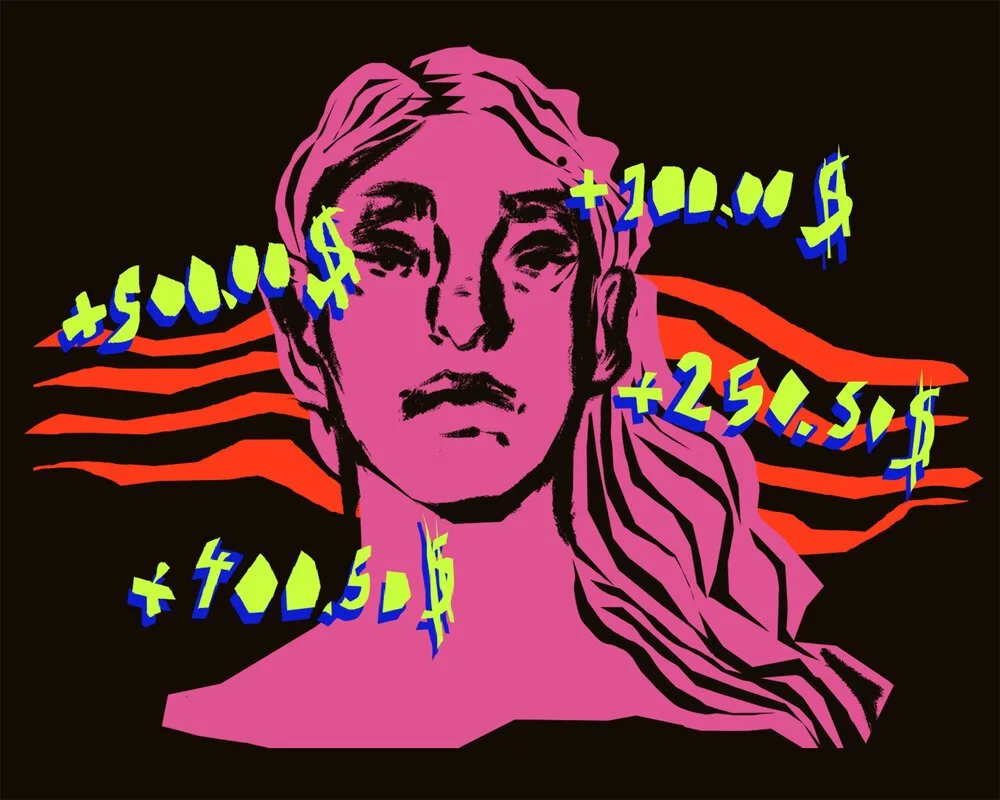Why Social Media Should Pay Creatives
For someone who researches social media and whose professional life as a photographer and writer relies on a social media presence of some sort, I have a very strange addiction. I am completely addicted to reading books and watching documentaries that decry social media and call for us to delete our accounts and live in an off-grid way like our parents did.
After each book be it Digital Minimalism, The Age of Surveillance Capitalism or How to do Nothing Resisting the Attention Economy, I decide that I’m going to quit social media, that I’m going to live in a walden-esque utopia free from digital distraction. But I never quite manage it, after a day or two the desire for a cheeky scroll overwhelms me and I’m back on Instagram like a patient on a drip. Atop my pile of failed social media retreats, I began to wonder why this wasn’t working for me. Why I simply cannot go cold turkey from social media?
The easy answer is that this addiction is built into the platforms with their behavioural insight teams who engineer the platforms to trigger our primal social instincts. But it’s important to understand why social media platforms have been designed so that we spend increasing amounts of time on them. It is because Time = money to them in two ways, firstly they harvest your data and secondly, they use this data to provide you with targeted advertising. In the past, I didn't have a problem with this business model. I reasoned that the networks must have so much data on so many people in such an anonymous way that my data would simply fall into a pot of ‘18-25-year-old woman living in London who likes art’ or something equally as banal.
But the reality of this data use is far from it, this mass of data does not overwhelm the AI behind these platforms. Instead, clear pictures of users are built and sold to the highest bidder. The algorithm developed by Kosinski et al. (2013), which inspired Cambridge Analytica, showed that on the basis of Facebook likes an individual’s personality traits could be predicted and on top of that potentially sensitive personal attributes including political and religious views, sexual orientation, ethnicity, intelligence, happiness, use of addictive substances, parental separation, age and gender could be predicted. Further research from Azucar et al 2018 showed that these predictions get more accurate when more of an individual’s digital footprint is fed into the algorithm.
Whoever has access to this data has a lot of power, this was demonstrated during the Trump campaign in 2016 where voters were matched to their ‘email addresses, online cookies and social media handles as well as other data points to create detailed voter profiles’ and then presented with highly individualised political messaging that engaged with a certain aspect of their identity and beliefs and I guess we all know what happened after that.
While the political use of this data to target people like this has been damned by many governments and breaches the UK’s Data Protection Act 1998 for unfairly processing people’s personal data for political purposes, it is something that is pretty routine in the commercial sector. Our individual data is mined by the platforms and sold to brands in the form of highly individualised advertising space. By using social media platforms we are allowing them to harvest very valuable data from us, we are not placed into general categories, rather the data is used to create micro-categories which are then effectively targeted by the commercial and sometimes political sector.
So why on earth do we continue to agree to the harvesting of our personal data in exchange for the use of platforms that at best threaten our privacy and at worst threaten democracy itself?
Perhaps we do a zombie-ish click of the terms and conditions of social networks because we view these services as essential, inalienable from modern life (especially modern life during a pandemic!). But while their structure is certainly unique, I began to wonder what social media provides that I couldn’t get elsewhere. I realised that it the combination of three things; keeping in touch with my friends, keeping on top of news and being able to see endless artistic content and inspiration tailored to me.
However, I can easily keep in contact with my friends via texts and phone calls, so if social media disappeared, I would still be able to talk to them. As for keeping up to date with news, there are still news channels, news sites and newspapers, yet what would be lost without social media is the ease at which I can access information from grassroots and activist organisations. But without social media, in particular Instagram, it wouldn’t be as easy to see endless artistic content and inspiration tailored to me.
I realised that what keeps me hooked and scrolling is the endless pages of beautiful photography, films, drawing, writing etc on Social Networks and Instagram in particular. Some of this content is paid for and created by magazines and other outlets but a lot of this content is freely produced and shared by small to mid-level creatives in the hopes that it could lead to an increased following, IRL opportunities or both. This dynamic makes social media platforms the ultimate employer who in the end asks you to work for free, for ‘exposure’.
It’s as if we are the puppeteers putting the shadows onto the walls of Plato’s cave except because we are making the content that keeps people online, that people exchange their personal data for which the social networks then profit from but we are not being paid for our service. Of course, some people might be against creatives being paid because acceptance of payment would make creatives complicit in this system but arguably we already are, because we are providing something for free that the platforms require to generate data and ultimately income. Whether we like it or not we’re already part of this system.
There is already a movement for content creators to be paid for their labour whether that be through platforms like Patreon or OnlyFans, but I don’t think that the audience should be the ones to do it. We must remember that these platforms are making astronomical profits off of our data and usage of their networks and they should be paying for the programming that keeps the audience there.
I know the demand for payment of creatives initially sounds very bizarre because this is not how we understand social media platforms to function, but It’s worth remembering that at its core the internet is simply a network and anything else we attach to it, how it is and how it should be is just an extension of existing social relations. Just because we’ve built the internet in a certain way doesn’t mean that’s the only way it can be or operate.
It can be imagined in another way and platforms paying creators isn’t limited to the world of imagination anyway. YouTube already do this through their YouTube Partner program. After reaching 1,000 subscribers and 4,000 hours of watch time creators can access monetisation features like fan funding and merchandise sales similar to how Instagram creators use merchandise and Patreon subscriptions but the key difference in the YouTube Partner program is how advertising revenue is distributed. YouTube gives the content creator 55% of the ad revenue earned from the clicks and impressions of adverts placed on their videos.
Although it’s more difficult to directly correlate ad engagement with individual users on Instagram as content is presented on a news feed in an endless scroll this doesn’t make paying content creators impossible. Instead, the figures of reach and engagement of a creator's account and the subsequent behaviour of their followers with adverts could be used to calculate payment for creators, or any other system someone more qualified than me in Silicon Valley could come up with.
Payment for content by social media platforms is not impossible and is only fair. Ultimately creatives should be paid for the content they create and share on platforms because a service is being provided and that service is engaging users. This engagement of users is vital to the business model of social media networks as it allows platforms to mine individual’s data and the more time spent on a platform the more specific and valuable the data is. As creatives, unfortunately, we are already complicit in this system and for the time being bound to presenting our work on these platforms so it is high time that we are compensated financially for it.
Words: Issey Gladston | Illustrations: Ola Sadownik



